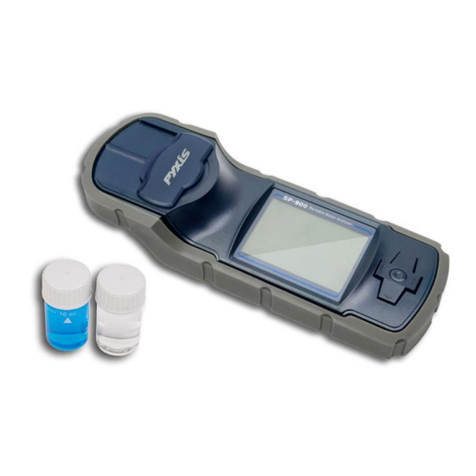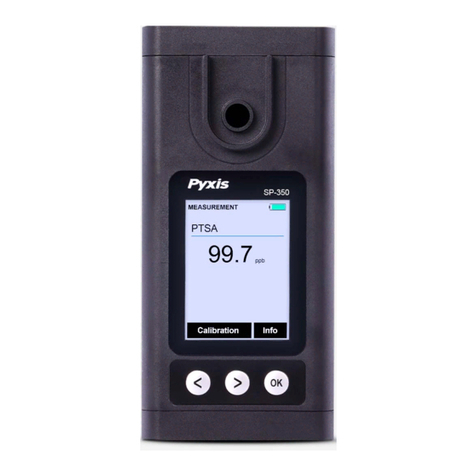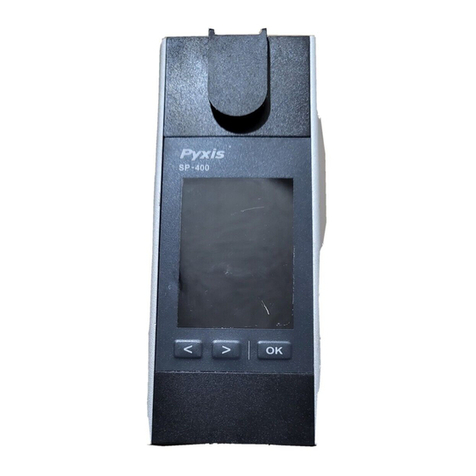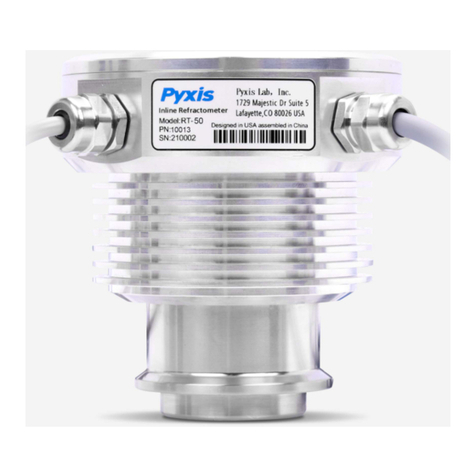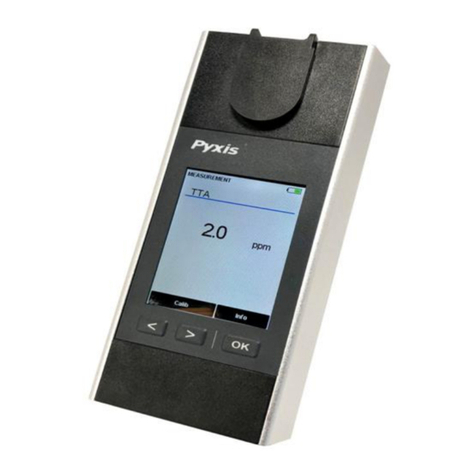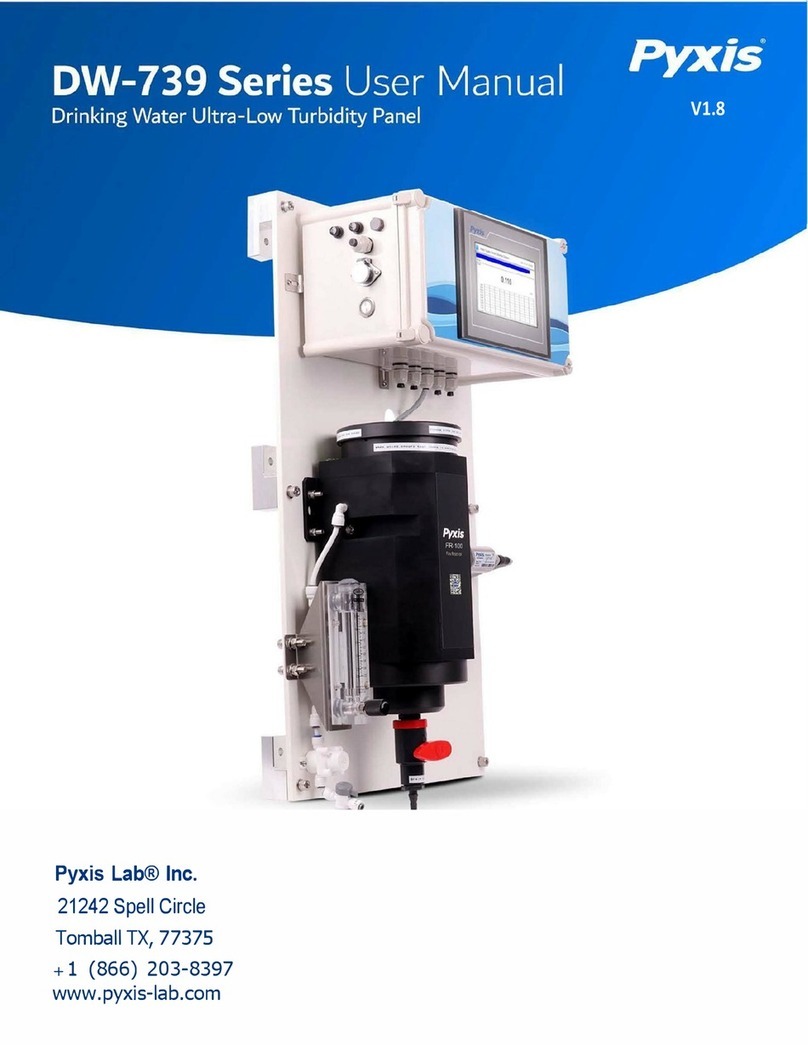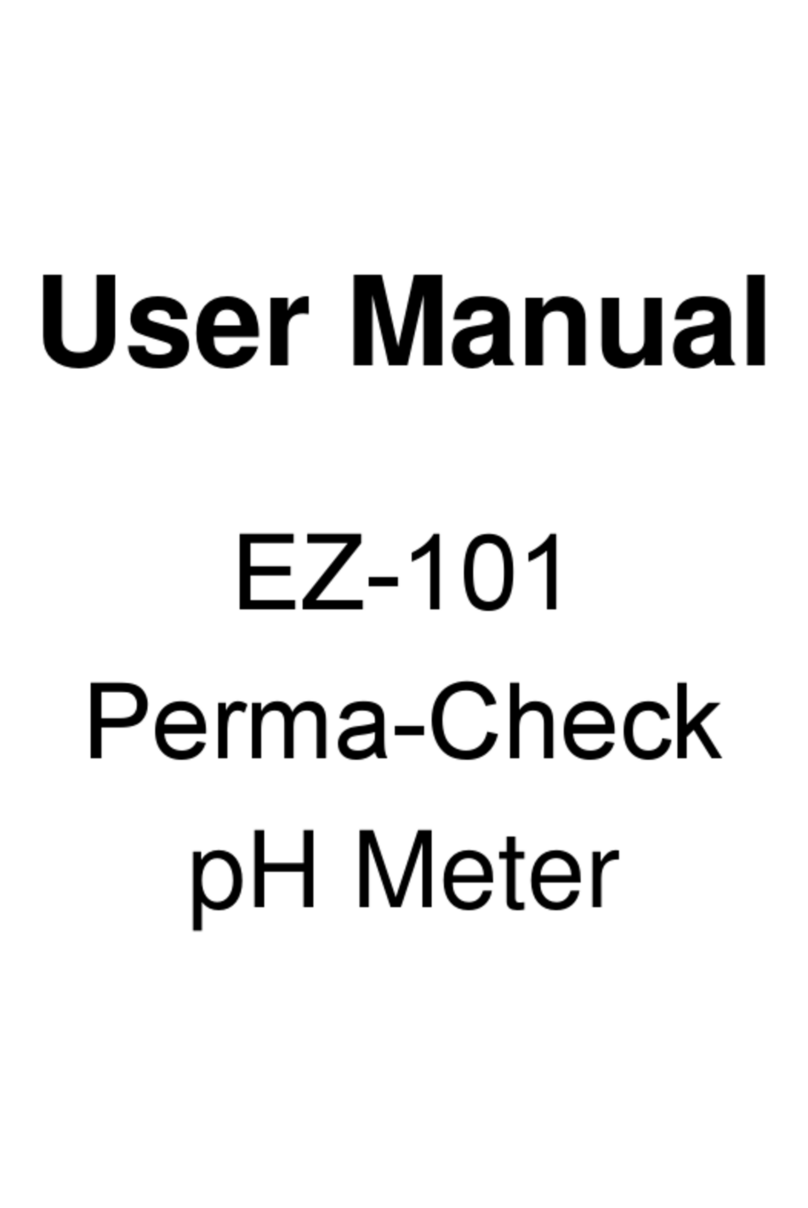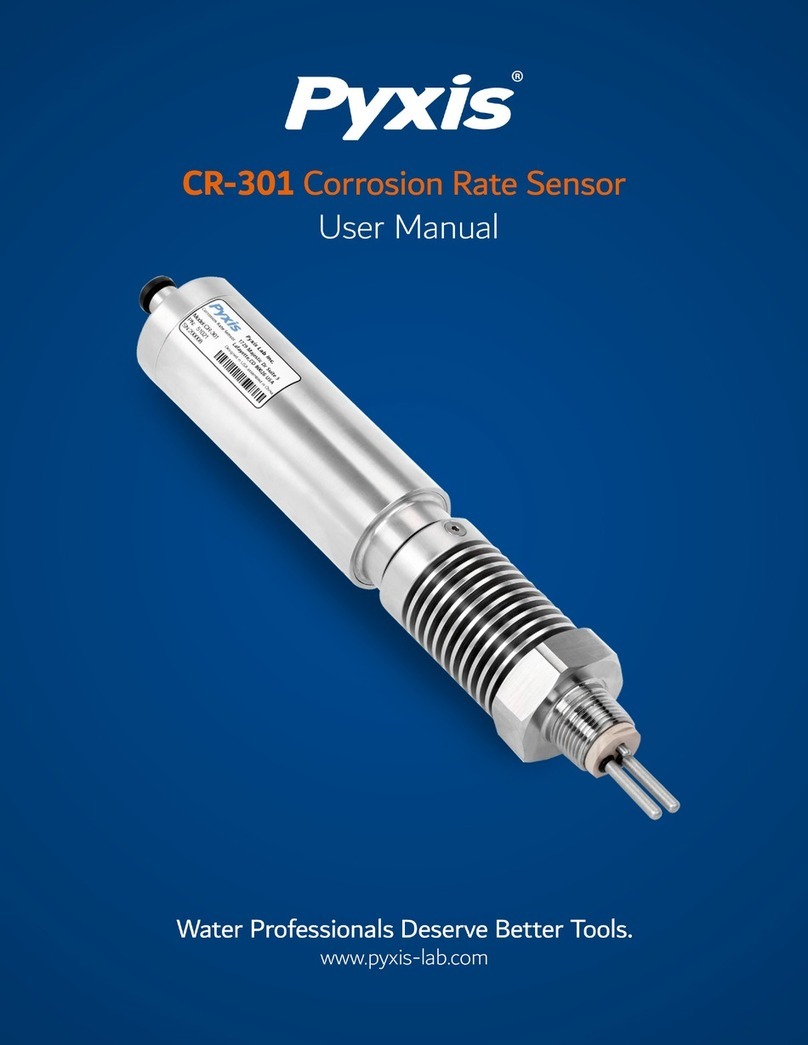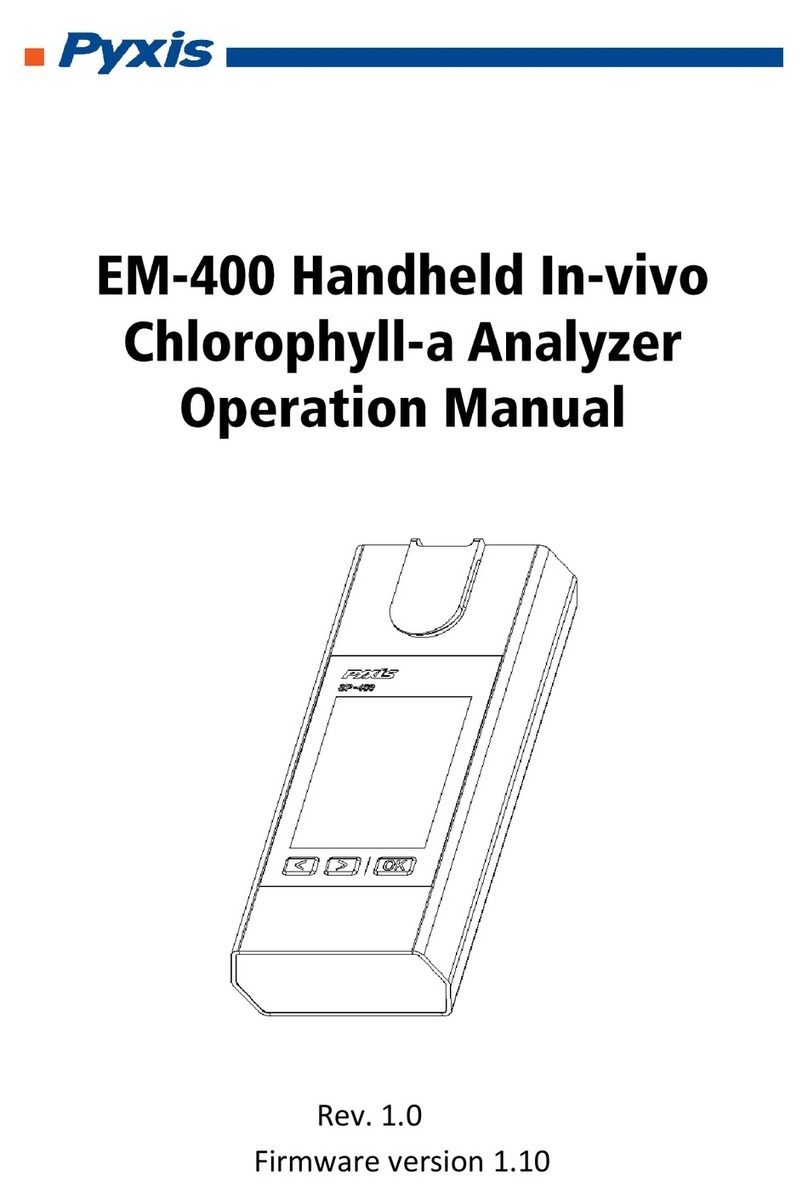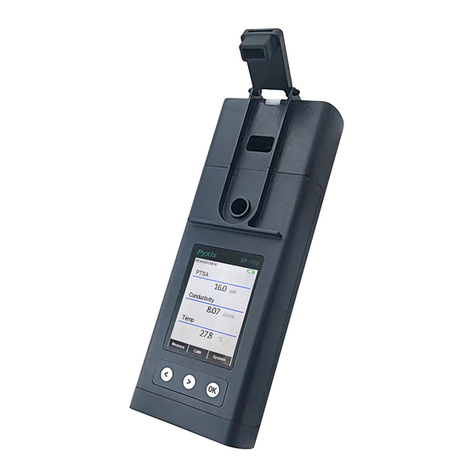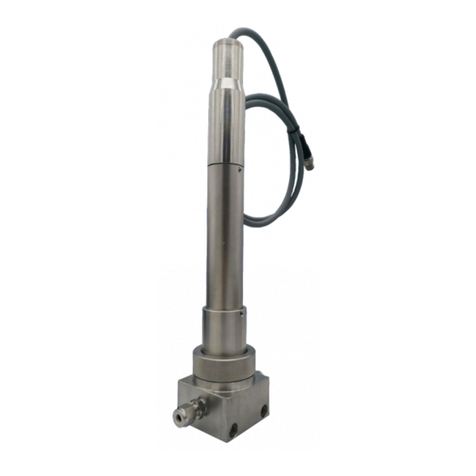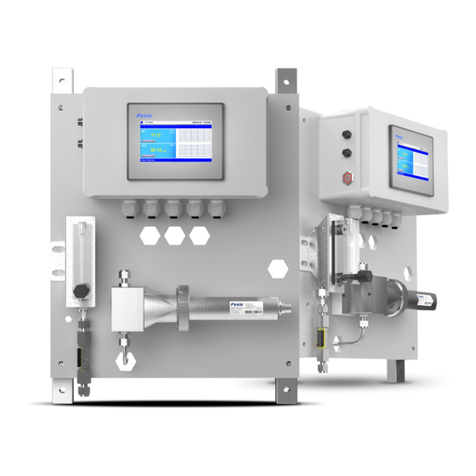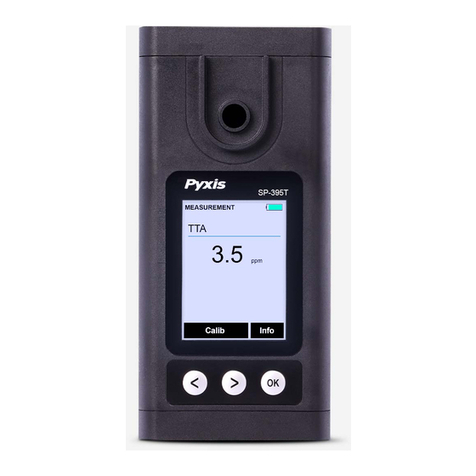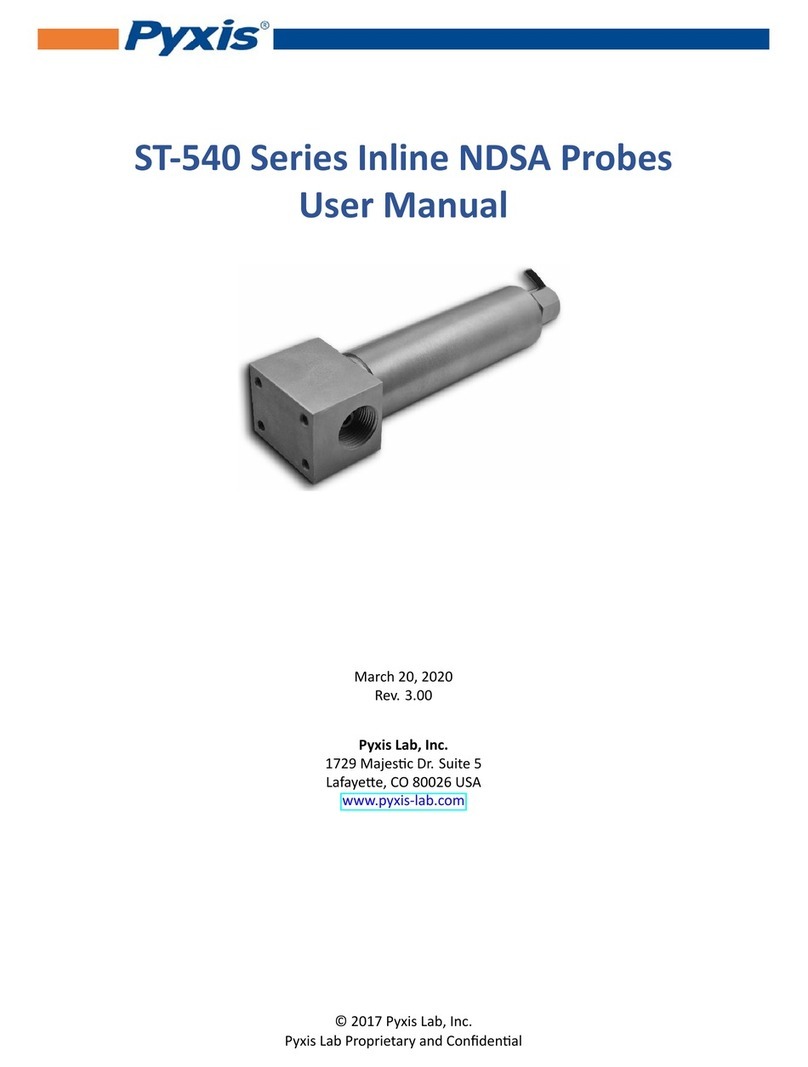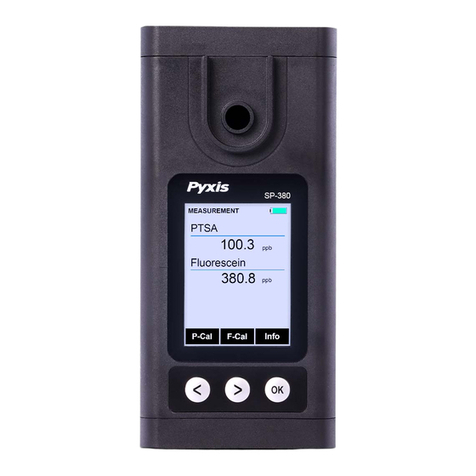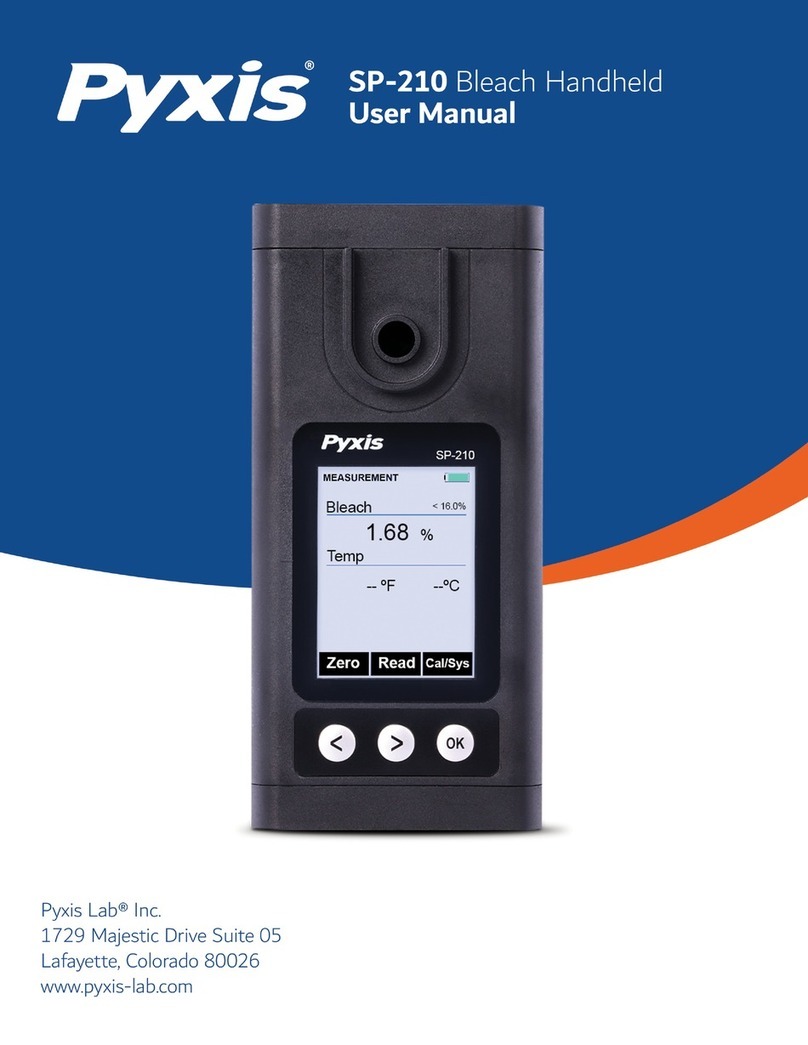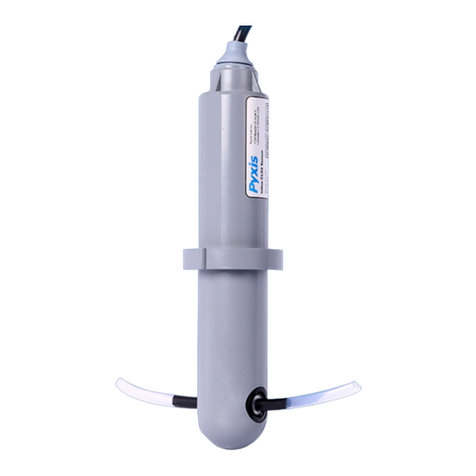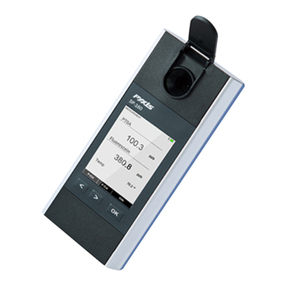
1 Introducon
The Pyxis HM-500 Series probe measures the concentraon of mulple oils in water ulizing uorescence
methodology at 365 nm wavelength and 410 nm excitaon. The HM-500 Series probe is uniquely designed
with extra photo-electric components that also monitor the color and turbidity of the sample water. This
proprietary feature enables the HM-500 Series probe to automacally compensate for color and turbidity
in the water sample eliminang interference commonly associated with real-world samples. The HM-500
Series probes have a short uidic channel and can be easily cleaned. The uidic and opcal arrangement of
the HM-500 Series probe are designed to overcome shortcomings associated with other uorometers that
have a distal sensor surface or a long, narrow uidic cell. Tradional inline uorometers are suscepble to
color/turbidity interference and fouling and can also be very dicult to clean. These unique features of the
HM-500 Seriesprobe provide a level of accuracy far greater than convenonal inline oil in water sensors and
also enables the user to conduct inline sensor cleanliness diagnoscs as a predicve value.
Oil is a complex mixture of organic compounds. The term “oil” can be referred to as a range of dierent
classes of chemical compounds, such as vegetable oil and petroleum oil. Almost all oil substances uoresce
under UV or near UV excitaon in a dierent degree because invariably, all oil contains aromac or other
uorescent compounds. Oil-in-water analysis by uorescence is a widely used eld-tesng method but is
fundamentally dierent from other wet chemistry methods, which are highly accurate but extremely me
consuming and done o-line. Commonly used alternave methods include the following:
1. EPA 1664 gravimetric method measures the amount of oil extracted to a solvent by weight.
2. The Infrared method (ASTD D7678) measures the absorpon of oil extracted to cyclohexane in the
range of 1370–1380 cm-1 by methyl group in the oil, using an IR spectrophotometer to qualify the oil
concentraon.
Due to the HM-500 Series probe ulizing the uorescent signature of the oil in water, the concentraons
inially measured by the probe for a given water sample “may” agree with each other in a relave sense,
but this is not always a guarantee. The HM-500 Series is designed to be calibrated to agree with the oil-in-
water concentraon from a given oil type determined by commonly used methods. The calibraon of the
HM-500 Series probe should be inially done by the user with an actual prepared oil-in-water standard,
within the detecon range of the sensor itself. Once calibrated to the prepared oil-in-water standard, the
HM-500 Series probe can be used to “measure” a synthec Pyxis Oil-In-Water Secondary Standard Soluon
to determine its “equivalent value”. This secondary standard and its equivalent value can then be used in
the future for sensor calibraons, as a more stable and easier method of sensor calibraon versus preparing
the actual oil-in-water standard each me. Details are explained on this process in the calibraon secons
of this manual.
Each HM-500 Series probe is also provided with the standard ST-001 Tee Assembly for rapid installaon in
commonly used piping plaorms. The ST-001 has two 3/4” female NPT ports in both threaded and straight
socket formats. Pyxis Lab also oers 2” and 3” Tee formats for larger inline installaons as well as the MA-
102S Submersion Adapter for submersed applicaons. The HM-500 Series probe oers both 4–20mA and
RS-485 Modbus outputs for rapid connecon to any microprocessor controller; PLC or DCS. When used with
the MA-WB Bluetooth Adapter, the HM-500 Series probe may be accessed wirelessly for cleaning and cali-
braon using the uPyxis® Mobile or Desktop App. Alternavely, if power supply is limited from the receiving
controller, users may ulize a Pyxis PowerPack auxiliary box. PowerPack is oered in both 1- and 4-channel
plaorms providing 24 VDC power supply to any Pyxis inline probe as well as 4–20mA signal passthrough
and Bluetooth connecvity to all Pyxis probes connected. See the Unpacking Instrument secon for details.
